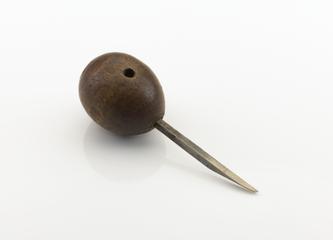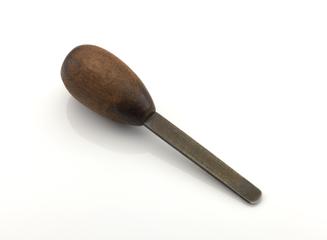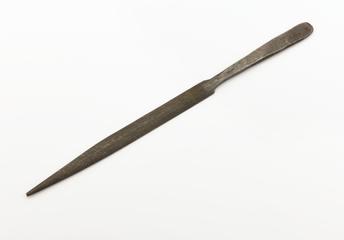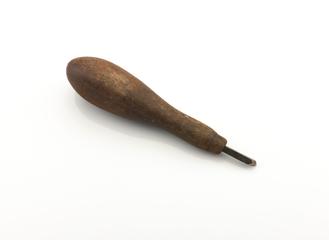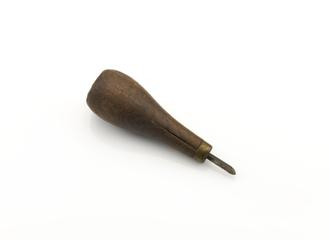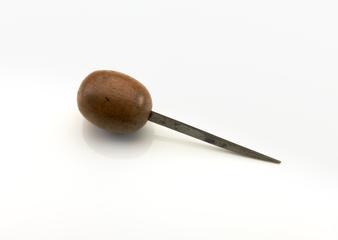
wheel cutting machine
- Made:
- 1668-1672 Probable in England




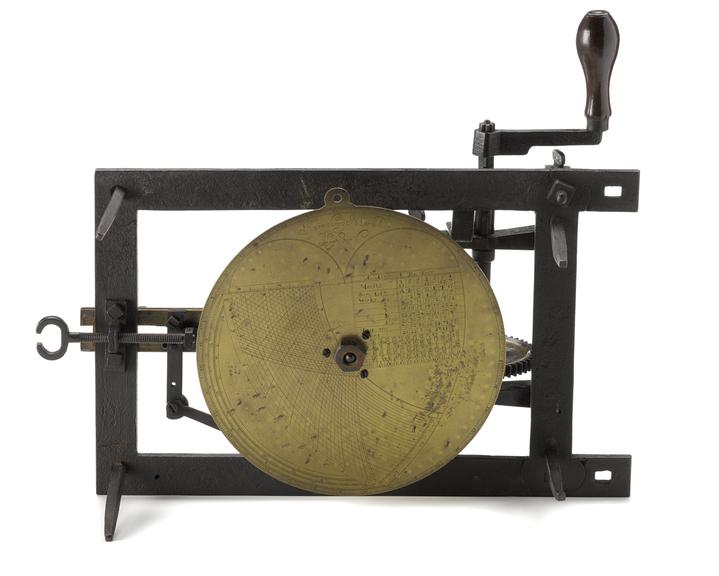
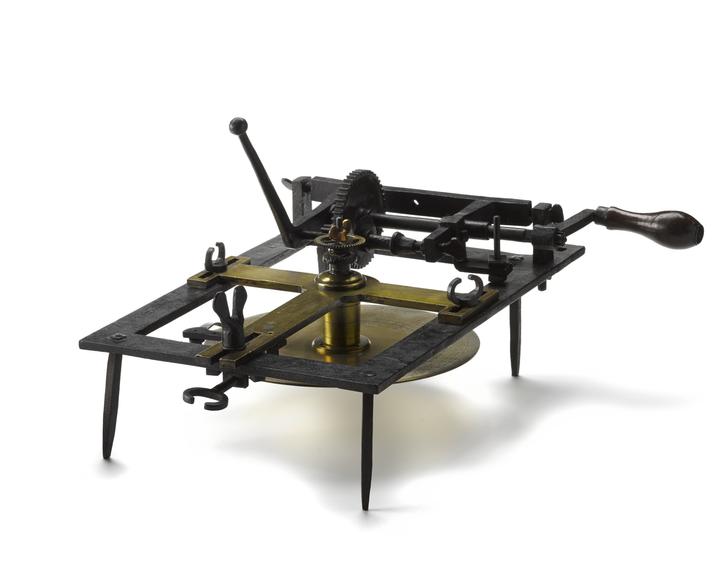
Early clock-wheel cutting machine made by Humphrey Marsh, England, 1668-1672.
Wheel-cutting machines were used to make gear wheels for clocks and other mechanical devices. This example is thought to have been made by Humphrey Marsh de Highworth due to the presence of the signature on the underside of the plate, which is an unfinished Gunter quadrant and a perpetual calendar. From the leap years it is evident that the calendar was begun between 1668 and 1672. The work on the quadrant was abandoned and the plate was used to make this machine.
The circular plate is attached to the spindle which carries the blank. The spindle passes through a 'T' plate, the ends of which are slotted and secured by lock nuts to the iron frame and which can be adjusted by a screw to take blanks of different sizes. The cutter is mounted in a frame on bearings so that it can be swung into the blank as the cutting proceeds. The cutter is driven by a handle through gearing.
Details
- Category:
- Hand and Machine Tools
- Object Number:
- 1954-421
- Measurements:
-
overall: 12.2047 x 19.8819 x 17.3228 in.; 310 x 505 x 440 mm
- type:
- wheel cutting machine
- credit:
- National Maritime Museum
